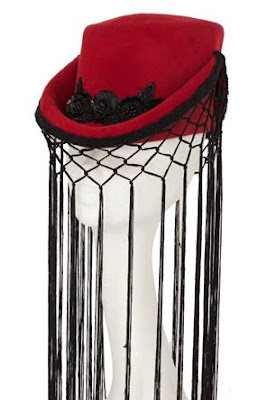
The danish artist
Trine Søndergaard made these amazing pictures of women from the little danish island Fanø, in their historical traditional dresses and head-scarfs. We are so used to see pictures of traditional costumes from all over the world, that we almost forget about the rich history right in front of us. The mask is called a "Strude".

Of course it makes people think of the current discussion about Muslim head-scarfs and
Burqas ...
"What's interesting is how we see the images today," says Søndergaard "The
Strude is not a burqa... it's a protection against the sun and sandstorms... but we read our culture and time into the pictures, so there's this confusion."



 STRUDE
STRUDE
By Camilla Jalving, artcritic, Ph.D
The scarf reaches all the way down to the neck. Tied over the chin, mouth and the tip of the nose is a piece of material secured with a ribbon around the neck. Another piece, held in place in the same manner, covers
the forehead, while the hair is hidden beneath a second scarf. Through a small slit, one can see the eyes
– her eyes. But she herself is looking away. This picture is part of Trine Søndergaard’s series of photographs
Strude taken on the small Danish west coast island of Fanø in the period 2007-2009. It was here that in
former times the women were so attired, like the woman in the photograph, with a ‘strude’ – a hood which
covered the upper and lower parts of the face as protection against the sun and wind when they were
working in the fields. They also wore a dress covered with symbols, parts of which accompanied them
throughout their entire lives, from when, as young girls, they reached confirmation age and were
appropriately veiled, until when, as married women, they were supposed to mark their marital status and
indicate important stages of life to the world around them. In this way, the costume of the Fanø women
spoke its own language. It had its own alphabet and its own grammar, which only the initiated were able to
decode. For the uninitiated it remained a shield, an armour against wind and weather and inquisitive gazes.
Today the dresses and accompanying hoods, which are only part of the working clothes, are worn on
special occasions only, such as the annual Sønderho Day, the second Sunday in July. On that day the
town’s inhabitants and visitors on holiday put on the old costumes to transform themselves at a stroke into
exotic creatures from a bygone age. It is on such occasions that the artist Trine Søndergaard has come with
her camera to a temporarily-devised studio in the Lorenzen house in Sønderho, and once in the attic of the
library in Nordby, to photograph women of all ages wearing the dress, scarf and hood.
 One very special line at Coco de Mer is their Circus Child range. Here are some of the hats from bespoke milliner Victoria Grant. Fantastic creations from the world of circus side-shows, cabaret and vaudeville.
One very special line at Coco de Mer is their Circus Child range. Here are some of the hats from bespoke milliner Victoria Grant. Fantastic creations from the world of circus side-shows, cabaret and vaudeville. "The Circus Child range is a limited edition, made to measure, capsule collection of Circus inspired pieces designed to raise money for Circus Child, a not for profit organisation that supports and promotes circus groups around the world that work towards social change. Sam Roddick of Coco de Mer, Matilda Temperley and Victoria Grant have joined forces to create this celebratory collection of Circus inspired pieces."
"The Circus Child range is a limited edition, made to measure, capsule collection of Circus inspired pieces designed to raise money for Circus Child, a not for profit organisation that supports and promotes circus groups around the world that work towards social change. Sam Roddick of Coco de Mer, Matilda Temperley and Victoria Grant have joined forces to create this celebratory collection of Circus inspired pieces."













